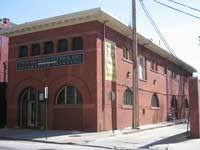
Viewing the recent work of Elena Volkova immediately involves the viewer with questions about their awareness of boundaries and location. To paraphrase Edmund Jabes observation that “Light needs much dark in order to dazzle” , these works need much space in order to be situated.
By paying close attention to some of the images one can deduce that they are windows framing the sky, whilst other images may be of snow banks, or the sea, perhaps with mist, or the imprecision of a photographic time exposure. However, what they are – whether graphite drawings or photographs, or even what they are images of – is of secondary importance to how they are. They are tenuous.
As clouds, mist, snow, or blurred moving water the surfaces under consideration are barely ‘captured’, or at best, slight notated as fleeting states of affairs. They are citations of tenuity, lacking as they do, substance, or solidarity. Their thinness and scant perceptibility is most obvious in the relationship that is maintained with their boundaries. Edges are only established in order to bring themselves into question.
If the images are tenuous, then so is their form of presentation. Where the images are located on the paper is approximate. The photographs ‘anchor’ the centre of the page but are indeterminate in terms of where they stop or start vertically, and the drawings are anchored by an almost indiscernible grid to the paper that supports them and that either they fade into or emerge from. The work is suspended by clips from stretched wires, and is viewed against walls comprised of different surfaces. The paper curves slightly and casts shadows; it carries its images but is still allowed materiality in our space, even if it is a vulnerable materiality. The size of the sheet of paper, whether large or small, never lets the viewer forget that it is a material; a material bearing an image and suspended in front of a wall as an insubstantial intervention in our space. The openness of the material to the viewer, it’s vulnerability, has a direct bearing on one’s perception of the work and it’s meaning.
Temporality and contingency come together in the moment of the artwork, in one’s encounter with the artwork, to reinforce the tenuousness of that encounter. An encounter in which one is pointedly reminded of our own tentative presence and attempts at making sense of what is before us physically and by implication.
- John Penny

No comments:
Post a Comment